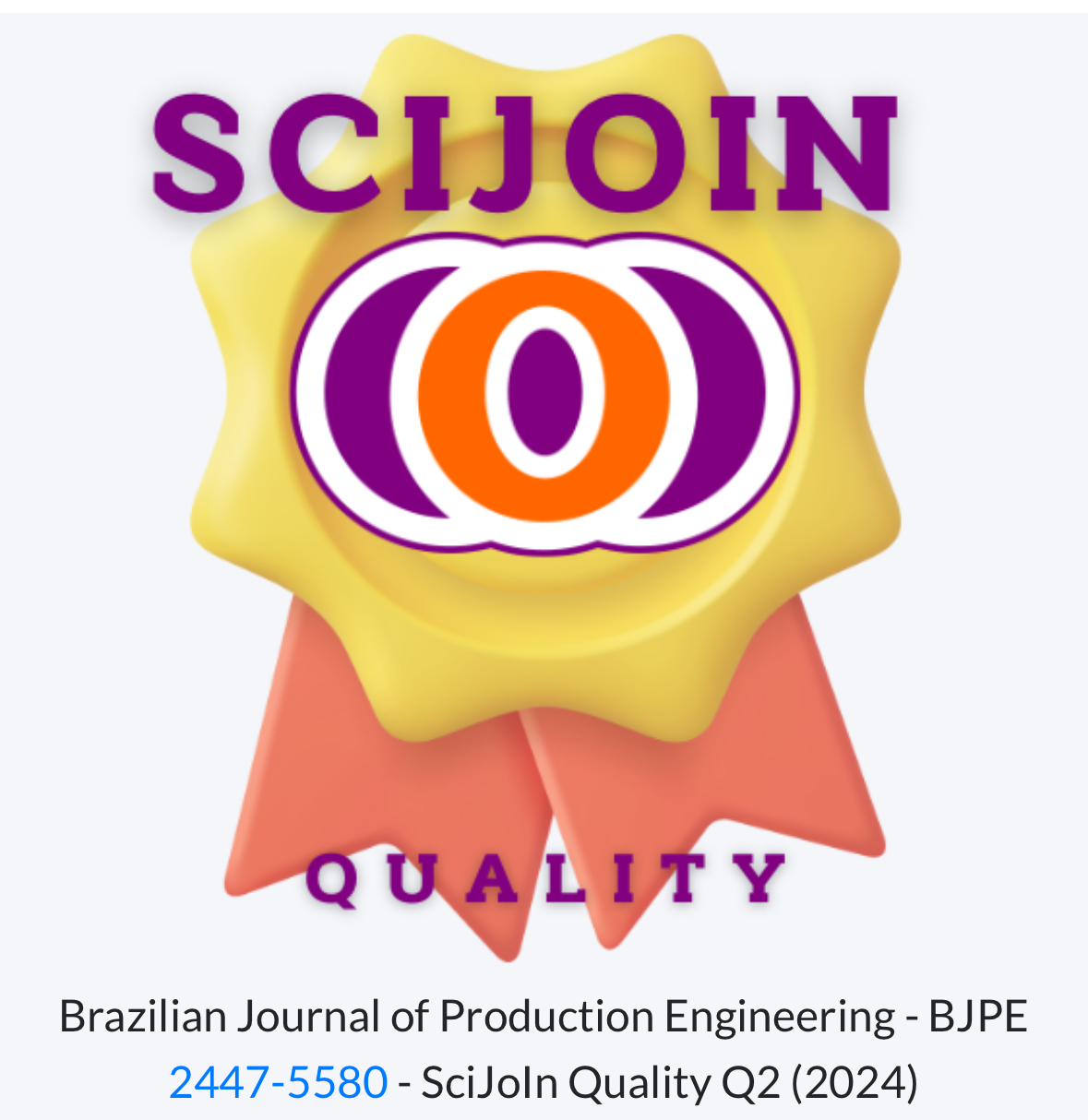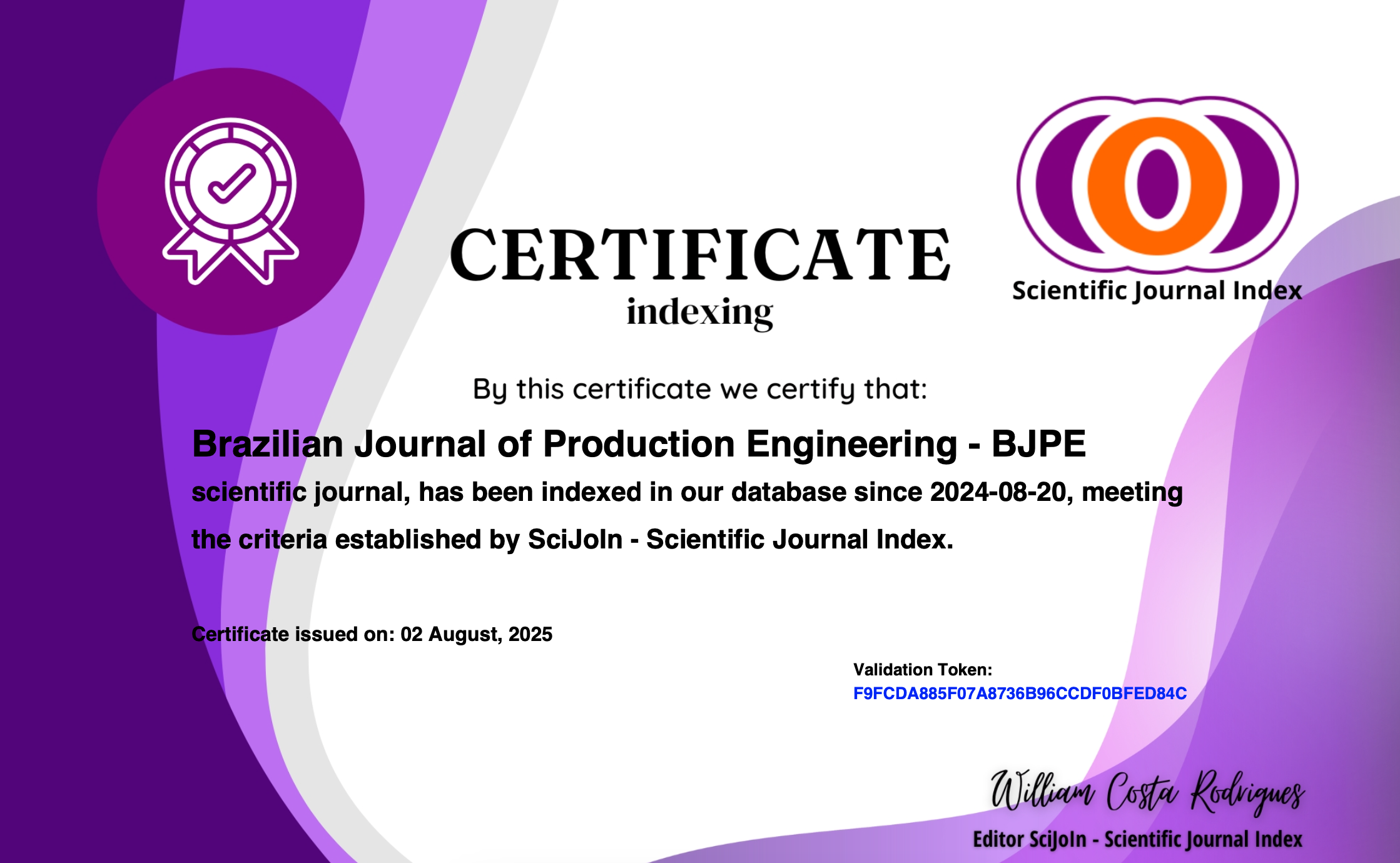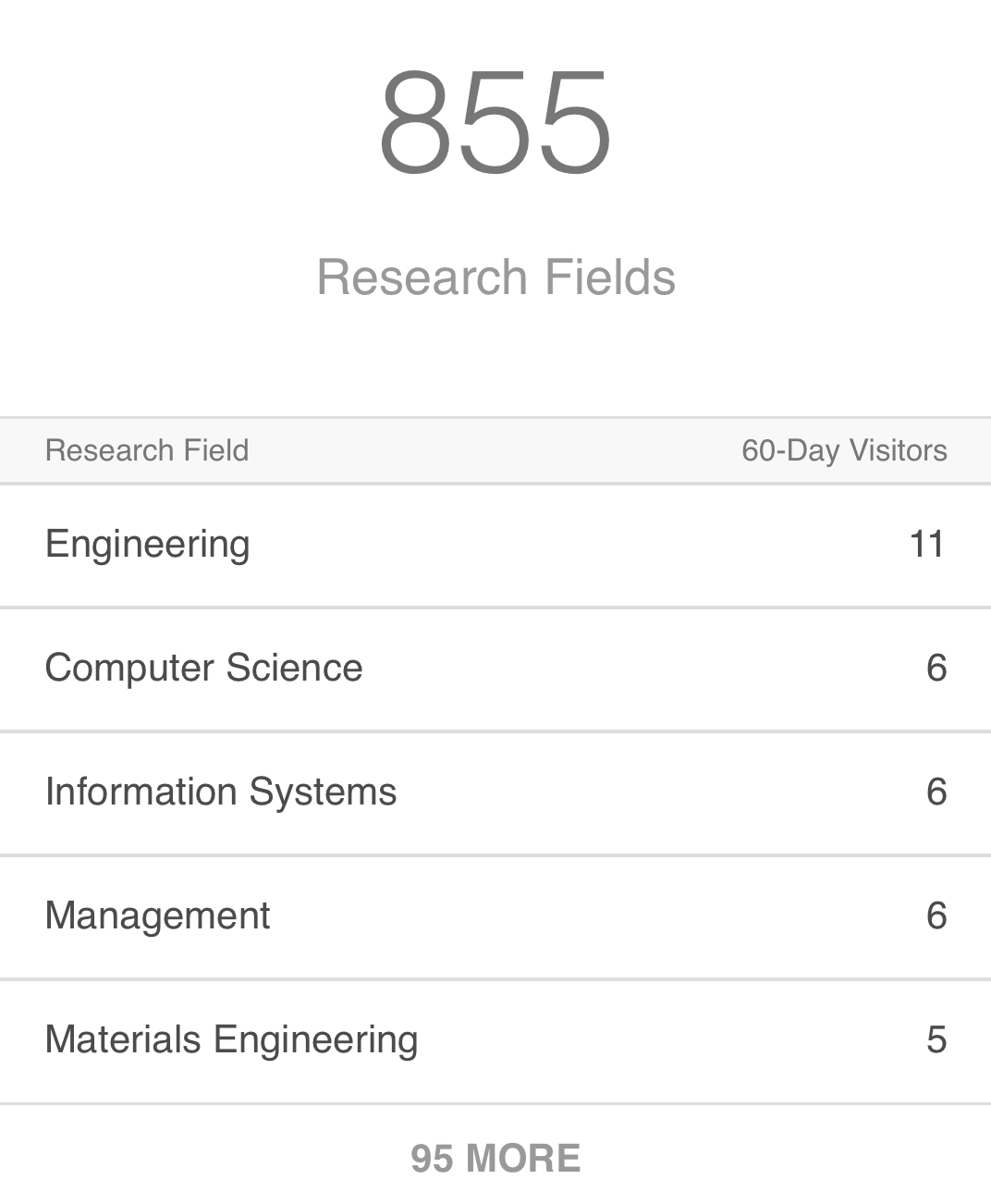CIRCULAR ECONOMY: A CONTRIBUTION TO THE SUSTAINABLE DEVELOPMENT
ECONOMIA CIRCULAR: UMA CONTRIBUIÇÃO PARA O DESENVOLVIMENTO DA SUSTENTABILIDADE
Resumo
The aim of this study is to identify the effective contributions of Circular Economy to the development of Sustainability. With the practice of sustainable action by companies, positive results started to appear, but even with strategies for combat and prevention of problems coming from misuse of natural resources, these practices showed themselves insufficient to solve the problems of contemporaneity. This way, new discussions appear with the challenge to include innovative actions, which lead to sustainable development, minimizing the impacts caused by the results coming from linear economy. The Circular Economy appears as one of the best alternatives of contribution to the resoluteness of these several problems. The methodology used in this study was the systematic review of literature, having as the main source of research the base ISI Web of Science. By the results, it is evidenced that Sustainability and Circular Economy have in common the aim of approaching environmental, economic and social problems. However, it is also identified by scientific literature that Circular Economy presents new items that are not contemplated by Sustainability, emerging as a new support strategy to sustainable development, a tool that came to strengthen sustainable practices and help companies to reach the goals proposed by triple bottom line. Furthermore, according to the results obtained by researchers of this area, the Circular Economy aims to explore the efficiency of using energy and materials, ensuring an economic growth, which is less dependent on natural resources, emphasizing, among others, to the redesign of processes that focus on the extension of products cycle of life.
Downloads
Referências
Amui, L. B. L., Jabbour, C. J. C., Jabbour, A. B. L. S., & Kannan, D. (2017, January 20). Sustainability as a dynamic organizational capability: a systematic review and a future agenda toward a sustainable transition, Journal of Cleaner Production, 142(1), pp. 308-322.
Anand, A., Khan, R. A., & Wani, M. F. (2016, December 15). Development of a sustainability risk assessment index of a mechanical system at conceptual design stage. Journal of Cleaner Production, 139, pp. 258-266.
Aurdahl, I. (2016). Adopting circular economy principles in supply chain management of organizations: reverse logistics. Masteroppgave: Nord Universitet.
Awuah, K. G. B., & Booth, C. A. (2014). Integrated management framework for sustainable cities: insights into multiple concepts and principles. WIT Transactions on Ecology and The Environment, 191, pp. 111-123.
Bakker, C. A., DenHollander, M. C., VanHinte, E., & Zljlstra, Y. (2014). Products that last: product design for circular business models. Netherlands: TU Delft.
Bocken, N. M. P., Pauw, I., Bakker, C., & Grinten, B. (2016, April 26). Product design and business model strategies for a circular economy. Journal of Industrial and Production Engineering, 33, pp. 308-320.
Braungart, M.; Mcdonough, W.; & Bollinger, A. (2007, September). Cradle-to-cradle design: creating healthy emissions: a strategy for eco-effective product and system design. Journal of Cleaner Production, 15, pp. 1337-1348.
Brennan, G.; Tennant, M.; & Blomsma, F. (2015). Business and production solutions: closing the loop. In Kopnina, H. & Shoreman-Ouimet, E. (Ed). Sustainability: key issues. EarthScan: Routledge.
D'Amato, D., Droste, N., Allen, B., Kettunen, M., Lähtinen, K., Korhonen, J., Leskinen, P., Matthies, B. D., & Toppinen, A. (2017, December). Green, circular, bio economy: a comparative analysis of sustainability avenues. Journal of Cleaner Production, 168, pp. 716-734.
Dubey, M. Excellence Model for Organizational Sustainability. Global Business and
Organizational Excellence, 2016.
Elia, V., Gnoni, M. G., & Tornese, F. (2017, January 20). Measuring circular economy strategies through index methods: a critical analysis. Journal of Cleaner Production, 142(4), pp. 2741-2751.
Elkington, J. (1994). Towards the sustainable corporation: win-win-win business strategies for sustainable development. California Management Review, 36, n. 2, pp. 90-100.
Elkington, J. (2001). Canibais com garfo e faca: seria um sinal de progresso se um canibal utilizasse garfo e faca para comer? São Paulo: Makron Books.
EMF - ELLEN MACARTHUR FOUNDATION. (2012). Towards the circular economy, v. 1, Economic and business rationale for an accelerated transition. Retrieved May 15, 2019, from https://www.ellenmacarthurfoundation.org/.
EMF - ELLEN MACARTHUR FOUNDATION. (2013). Towards the circular economy, v.2, Opportunities for the consumer goods sector. Retrieved May 24, 2019, from https://www.ellenmacarthurfoundation.org/.
EMF - ELLEN MACARTHUR FOUNDATION. (2015). Rumo à economia circular: o racional de negócio para acelerar a transição. Retrieved May 30, 2019, from https://www.ellenmacarthurfoundation.org/.
Falagas, M. E., Pitsouni, E. I., Malietzis, G. A., & Pappas, G. (2008, February 22). Comparison of Pub Med, Scopus, Web of Science, and Google Scholar: strengths and weaknesses. Faseb J., 22, 338–342.
Geissdoerfer, M., Savaget, P., Bocken, N. M. P., & Hultink, E. J. (2017, February 01). The circular economy: a new sustainability paradigm? Journal of Cleaner Production, 143, pp. 757-768.
Geng, Y., Sarkis, J., Ulgati, S., & Zhang, P. (2013, March 29). Measuring China’s circular economy. Policy Forum, 339, pp. 1526-1527.
George, D. A. R., Lin, B. C, & Chen, Y. (2015, November). A circular economy model of economic growth. Environmental Modelling & Software, 73, pp. 60-63.
Ghisellini, P., Cialani, C., & Ulgiati, S. (2016, February 15). A review on circular economy: the expected transition to a balanced interplay of environmental and economic systems. Journal of Cleaner Production, 114, pp. 11-32.
Ghunmi, D. A., Abu-Ghunmi, L., Kayal, B., & Bino, A. (2016, September 10). Circular economy and the opportunity cost of not ‘closing the loop’ of water industry: the case of Jordan. Journal of Cleaner Production, 131, pp. 228-236.
González, P., Sarkis, J., & Diaz, B. A. (2008). Environmental management system certification and its influence on corporate practices: evidence from the automotive industry. International Journal of Operations and Production Management, 28(11), pp. 1021-1041.
Iung, B., & Levrat, E. (2014, July 18). Advanced maintenance services for promoting sustainability. Procedia CIRP, 22, pp. 15-22.
Jamali, D. (2006, November 01). Insights into triple bottom line integration from a learning organization perspective. Business Process Management Journal, 12 (6), pp. 809-821.
Kopnina, H., & Blewitt, J. (2015). Sustainable business: key issues. Routledge: Oxon.
Korhonen, J., Nuur, C., Feldmann, A., & Birkie, S. E. (2018, February 20). Circular economy as an essentially contested concept. Journal of Cleaner Production, 175, p. 544-552.
Lacy, P., & Rutqvist, J. (2015). Waste to wealth: the circular economy advantage. Accenture
strategy: E-book.
Levy, Y., & Ellis, T. J. (2006). A Systems Approach to Conduct an Effective Literature Review in Support of Information Systems Research. Informing Science Journal, 9.
Li, S. (2012). The research on quantitative evaluation of circular economy based on waste input-output analysis. Procedia Environmental Sciences, 12, pp. 65-71.
Littell, J. H., Corcoran, J., & Pillai, V. (2008). Systematic reviews and meta-analysis. New York: Oxford University Press.
Maletic, M.; Maletic, D.; Gomiscek, B. (2016, December 01). The impact of sustainability exploration and sustainability exploitation practices on the organizational performance: a cross-country comparison. Journal of Cleaner Production, 138 (2), pp. 158-169.
Markkanen, J. (2016). Circular Economy in Real Estate Investment Companies. Bachelor’s Thesis, Bachelor of Engineering, Degree Programme in Environmental Engineering, University of Applied Sciences, Suomen Yliopistokiinteistöt Oy, Kampusareena.
Marquardt, B. (2016, July-December). Historia de la sostenibilidad: um concepto medioambiental en la historia de Europa Central (1000-206). Historia Critica, 32, Bogotá, pp. 172- 197.
Murray, A., Skene, K., & Haynes, K. (2017, February). The circular economy: an interdisciplinary exploration of the concept and application in a global context. Journal of Business Ethics, 140(3), pp. 369-380.
Nikolaou, I. E., Evangelinos, K. I., & Allan, S. (2013, October 01). A reverse logistics social responsibility evaluation framework based on the triple bottom line approach. Journal of Cleaner Production, 56, pp. 173-184.
Perella M. (2015). This is the future for business. Retrieved May 04, 2019, from http://interactive.guim.co.uk/embed/labs/circular-economy-the-future-for-business-interactive/.
Pisani, J. A. D. (2007, February 16). Sustainable development: historical roots of the concept. Environmental Sciences, 3 (2), pp. 83-96.
PNUMA - Programa das Nações Unidas para o Meio Ambiente. (2011). Rumo a uma economia verde: caminhos para o desenvolvimento sustentável e a erradicação da pobreza: síntese para tomadores de decisão. Retrieved May, 20, 2019, from http://www.fapesp.br/rio20/media/Rumo-a-uma-Economia-Verde.pdf.
Rajala, R., Westerlund, M., & Lampikoski, T. (2016, March 01). Environmental sustainability in industrial manufacturing: reexamining the greening of Interface's business model. Journal of Cleaner Production, 115, pp. 52-61.
Reike, D., Vermeulen, W. J. V., & Witjes, S. (2018, August). The circular economy: new or refurbished as CE 3.0?: exploring controversies in the conceptualization of the circular economy through a focus on history and resource value retention options. Resources, Conservation & Recycling, 135, pp. 246-264.
Ripant, E., Fan, I., & Tjahjono, B. (2016, June). Maximising the retained value of product cannibalisation based on circular economy principles. 23rd International European Operations Management Association Conference, Trondheim, Norway, 17-22.
Rogers, P., Jalal, K., & Boyd, J. (2008). An introduction to sustainable development. Londres: Earthscan.
Sachs, I. (2002). Caminhos para o desenvolvimento sustentável. Rio de Janeiro: Garamond.
Scott, S. D., Profetto-McGrath, J., Estabrooks, C. A., Winther, C., Wallin, L., & Lavis, J. N. (2010, December). Mapping the knowledge utilization field in nursing from 1945 to 2004: a bibliometric analysis. Worldviews on evidence-based nursing, 7 (4), pp. 226-237.
Sarkis, J., Zhu, Q., & Lai, K. (2011, March). An organizational theoretic review of green supply chain management literature. International Journal Production Economics, 130 (1), pp. 1-15.
Shah, S. K., & Corley, K. G. (2006, December 06). Building better theory by bridging the
quantitative-qualitative divide, Journal of Management Studies, 43 (8), pp. 1821-1835.
Shen, X., & Qi, C. (2012). Countermeasures towards circular economy development in west
regions. Energy Procedia, 16 (B), pp. 927-932.
Su, B., Heshmati, A., Geng, Y., & Yu, X. (2013, March). A review of the circular economy in China: moving from rhetoric to implementation. Journal of Cleaner Production, 42, pp. 215-227.
Teles, C. D., Dutra, C. C., Ribeiro, J. L. D., & Guimarães, L. B. M. (2016, April-June). Uma proposta para avaliação da sustentabilidade socioambiental utilizando suporte analítico e gráfico. Production, 26 (2), 417-429.
Veiga, J. E. (2008). Desenvolvimento sustentável: o desafio do século XXI. (3rd ed.) São Paulo: Garamond.
Velte, C. J., & Steinhilper, R. (2016, June-July 29-01). Complexity in a Circular Economy: a need for rethinking complexity management strategies. Proceedings of the Word Congress on Engineering, II (WCE 2016), London, UK.
Warodell, E., & Lindholm, V. (2016). Circular economy: the way to a more sustainable urban environment?: a study of how conversion and a circular economic business model can benefit the aspects of sustainability. Royal Institute of Technology, Department of Real Estate and Construction Management, Stockolm, Sweden.
World Commission on Environment and Development. (1987, August 04). Our Common Future: report of the World Commission on Environment and Development, Forty-second session, item 83 (e) of the provisional agenda, supplement n. 25, pp. 1-187.
Yu, X., Geng, Y., Dong, H., Fujita, T., & Liu, Z. (2016, May) Emergy-based sustainability assessment on natural resource utilization in 30 Chinese provinces. Journal of Cleaner Production, 133, pp. 18-27.
Zhou, Z., Chen, X., & Xiao X. (2013, ). On evaluation model of circular economy for iron and steel enterprise based on support vector machines with heuristic algorithm for tuning hyperparameters. Applied Mathematics & Information Sciences – An International Journal, 7 (6), pp. 2215-2223.
Downloads
Publicado
Edição
Seção
Licença
Copyright (c) 2019 Brazilian Journal of Production Engineering - BJPE

Este trabalho está licenciado sob uma licença Creative Commons Attribution-NonCommercial-ShareAlike 4.0 International License.

Todos os trabalhos publicados na Brazilian Journal of Production Engineering (BJPE) estão licenciados sob a Creative Commons Atribuição 4.0 Internacional (CC BY 4.0).
Isso significa que:
-
Qualquer pessoa pode copiar, distribuir, exibir, adaptar, remixar e até utilizar comercialmente os conteúdos publicados na revista;
-
Desde que sejam atribuídos os devidos créditos aos autores e à BJPE como fonte original;
-
Não é exigida permissão adicional para reutilização, desde que respeitados os termos da licença.
Esta política está em conformidade com os princípios do acesso aberto, promovendo a ampla disseminação do conhecimento científico.



2.png)


























































